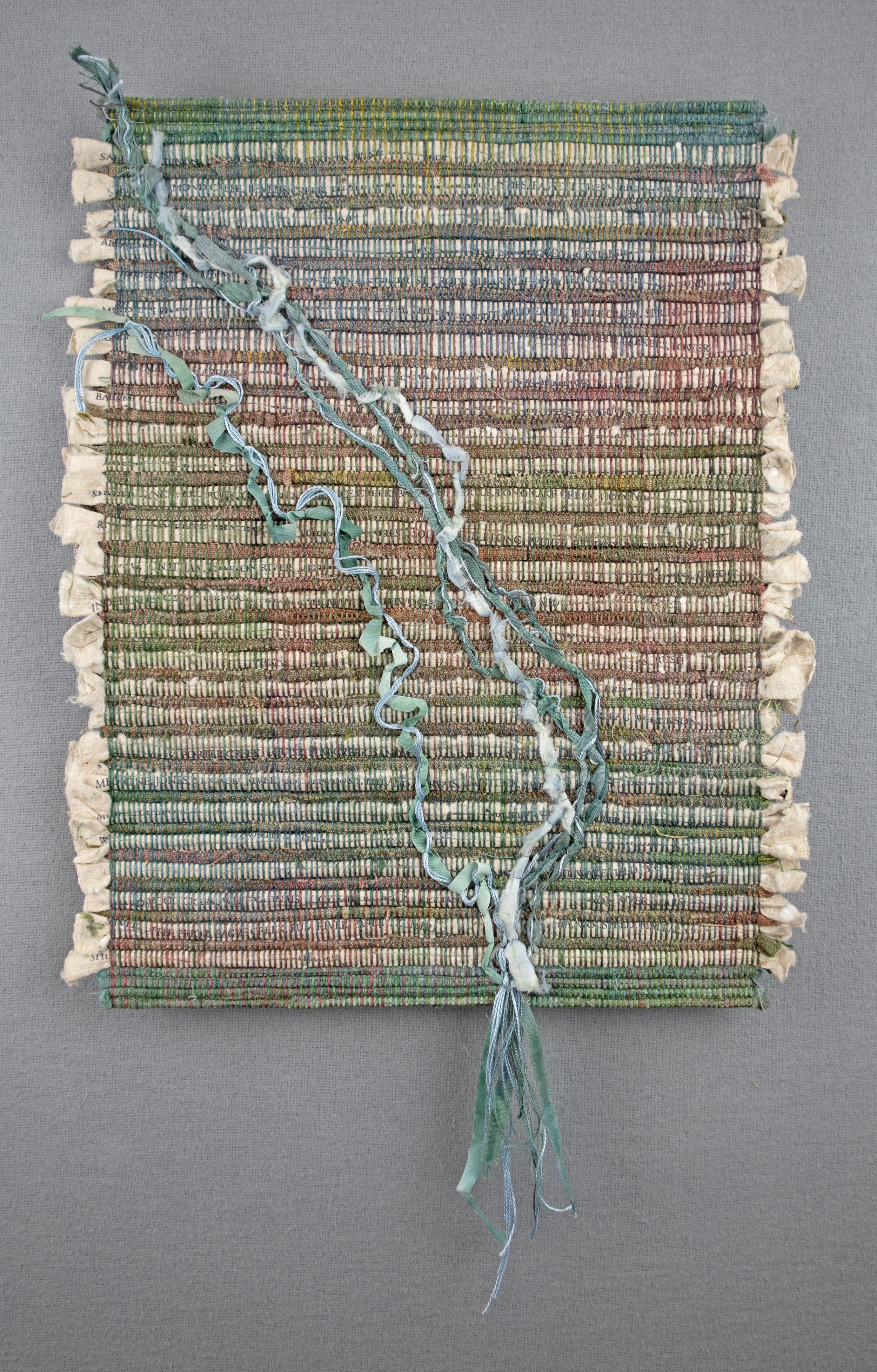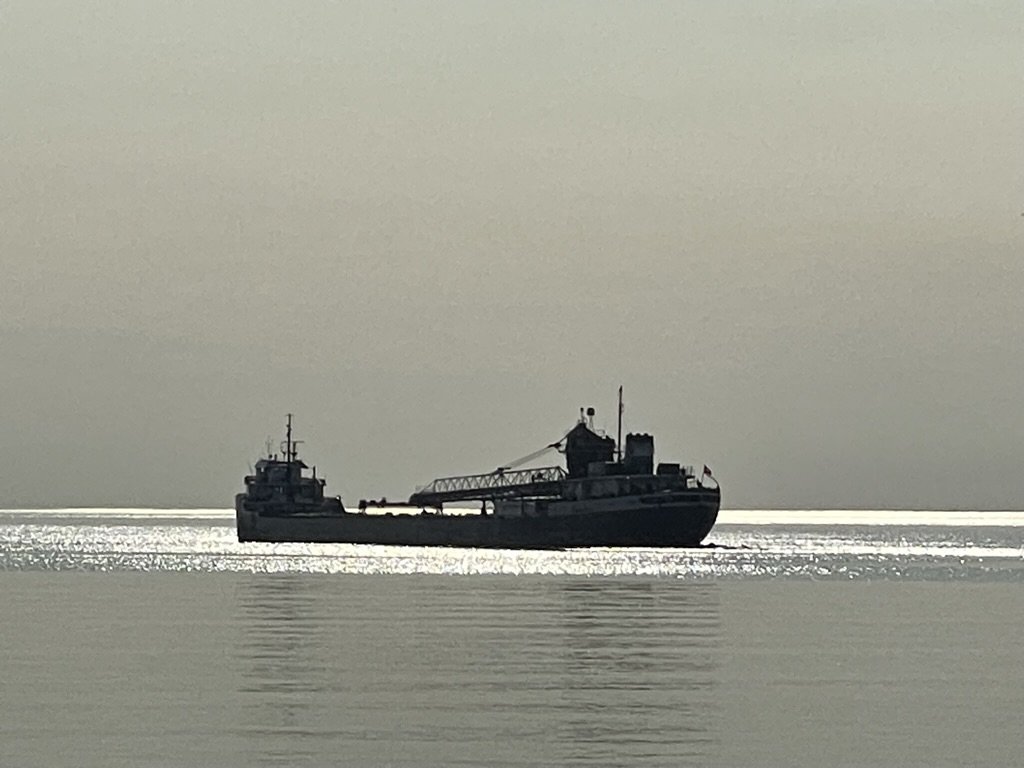My project with Art for Water, a program of the Minnesota Water Stewards and sponsored by Freshwater and Hennepin County, has reached its conclusion. My exhibition, Watershed Moments, opens October 10 and runs through November 7th at the Hopkins Center for the Arts. The opening reception is October 26, 6 - 8 pm in the member artist spotlight on the first floor of the center.
Exhibition Postcard
Exhibition Postcard Information
The work is this eight-piece series composed of layers of handmade paper, painted and handwoven fabric, and embroidery. They form interconnected maps with each other and stand alone as well. My work has always had a theme of connection to nature. As a new Minnesotan, I have been thinking about what it means to be in relationship with the places and waters around me. There is imperative to care in this mutual relationship. The land and waters provide a home and life for us and we must do our part to care for them as well. The Water Steward program offered me a starting point of knowledge about how we as a community can protect our waters. This protection starts with our individual connections with places that we love.
Watershed I
12" h x 12" w x 1" d mounted
Mixed media - hand painted linen handwoven fabric, machine stitched with hand embroidery on handmade paper.
2023
This year has been marked by visits to water, forming new points of connection and researching what my Art for Water project would evolve to be. I began in the spring by visiting Lake Superior and even having a quick dip. This summer I visited the headwaters of the Mississippi River. This was a place that loomed large in my mind. My husband made a trip twenty years ago, before we met, and told me stories of that trip. It was in part what lead us to move to Minnesota.
The trail to the headwaters
The Mississippi has always been a presence in my mind. I remember vising the river front a lot as a child – the annual fair, the McDonald’s riverboat restaurant, and the many floods that impacted St. Louis. My husband and I were married overlooking the river at a park. I’ve been the river’s other end point in New Orleans. At each point along the river, it changes, but all the parts that I’d seen before had been large, turbulent and full of barge traffic.
The Mississippi River from Bee Tree Park, St. Louis, Missouri
The Mississippi River at the headwaters is quiet. It emerges from Lake Itasca where wild rice sways in the wind. The boundary between the lake and the river is marked by stones. Some tourists scramble over the rocks to cross the river to the other side while others wade. At the time of our visit the water levels were lower than when my husband visited so long ago. We waded into the water to cross. The crossing water was shallow, cold, and clear.
Lake Itasca with wild rice in background, Mississippi River begins
Lake Itasca State Park is about three and half hours from the Twin Cities. The dive up set the stage for the trip up. The farther up north you go, the move wild the landscape becomes and signs for cabins and resorts reveal where Minnesotans spend summer vacation days. Minnesotans often talk about “up north.”
Standing along the bank and looking at the river it was startling to see it as a narrow stream. It snakes along in the north and gradually becomes the river that I’ve known. At the headwaters, it is a place of quiet contemplation. I’d like to go back at some point and spend more time exploring the park and seeing more of Lake Itasca.
While on the trip we ventured to Lake Bemidji State Park and walked the bog. The walk is a quarter mile stroll along a wooden boardwalk. I don’t think I’ve ever been in this type of wetland before. It was a beautiful quiet place where land and water meet.
The lush growth of the bog, Lake Bemidji State Park
This summer I’ve had the chance to kayak the Mississippi River a few times. On one of the longer trips our guide ushered us into Lock and Dam Number 1. We grabbed onto ropes and dropped forty feet before paddling out to our end point. The River near the Twin Cities has been designated a recreation area and managed by a partnership of federal, state, regional, cities and private owners. The area has been managed to return the river to a more natural state and as a result birds, wildlife and the ecosystem have returned.
The shore along the Mississippi River - I collected a fair amount of trash. Leave no trace.
I have also spent a significant amount of time with my local lake, Shady Oak. It is a place that I visit often. Swimming season is at an end, but I still wade and enjoy the sunsets there.
The sunset at Shady Oak Lake
Wading in the water - can you spot the fish?
Minnesota is such an easy place to love. Outside in the fall is glorius.

















